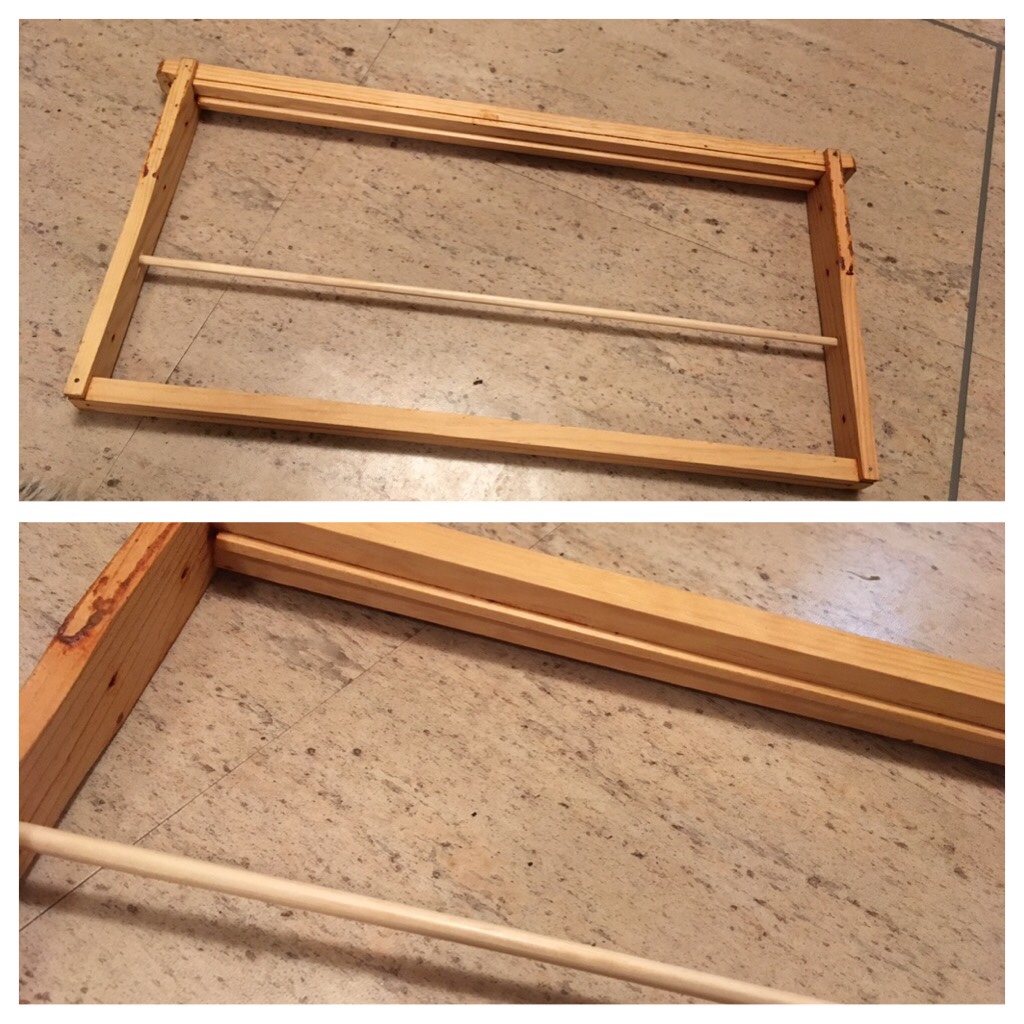bjosephd: What is the rough diameter of the skewers?
My first trials (2x vertical skewers) were with my 14x14 frames - and in order to get sufficient length I had to buy skewers with a 4.5mm diameter. I'd have liked them to be thinner, but the girls coped with that diameter ok. They essentially built 3 separate combs within one frame, and then morphed them together into one. Eventually the skewers became fully incorporated into the comb.
Ordinary deep frames (DN4 etc) will take skewers ex Tescos, which are 10" long and - as Fatshark says, around 3mm. If you drill the top-bar (I drill 2 holes, so as to separate the comb space into equal thirds) - insert the skewer with a dab of wood glue (such as D4 from Toolstation) - and - as some of them can be slightly 'bowed', rotate the skewer so that the direction of the 'bow' is inline with the top-bar. Then, assuming you have a divided bottom bar, place a drop of glue onto the skewer/bottom-bar contact points, and gently clamp the bottom-bars together with a clothes-peg until the glue has set. You may want to repeat that last step once, until you're happy that the skewer is held securely.
Once the skewers are in place, THEN insert lollipop (popsicle) sticks into the top-bar's foundation groove. As an alternative, you can also squeeze the top 1/4" of any old scraps of wild comb you may have cut away during inspections between two pieces of wood protected with Sellotape. Once their edges are flattened, those bits of comb can be inserted instead of the lollipop sticks, and held in place with a dab of molten wax.
Fatbee: Little John - have you tried horizontal in the past?
No, I haven't - not yet - but I'm considering this.
If you read Dadant's 'System of Beekeeping', he makes a very persuasive case for leaving the central area of a large comb free of obstacles - his argument being that the queen lays in concentric circles, starting at the centre and working her way outwards. Anything which causes interference - such as a beespace between combs - or an obstruction, such as a wooden skewer - will cause her to hesitate with uncertainty, and thus slow down the laying process.
Now I don't know if that's absolutely true or not, but it sounds plausible - and anyway - why not make life easy for the queen ?
So - what I rather fancy doing is to use thicker skewers (say, 4.5mm - now I've got a box-full of them !) - and insert them as 'stubs'. By this, I mean drill the side-bars where wire/ fishing line would normally be attached, and glue into place short lengths of skewer, so that (say) a quarter of the distance from each side bar is supported by a stub skewer, leaving the central comb-width area completely free of any obstructions. I think that would certainly be worth a trial, and next time I'm making frames, I'll construct a box-worth in that style and see how they're received.
Derek - thanks for posting that pic - saved me hunting for it.
thats interesting... Perhaps a consequence of evolving with predominately tall narrow cavities?
Not if you understand the pre-requisites of evolutionary adaptation.
LJ




















































